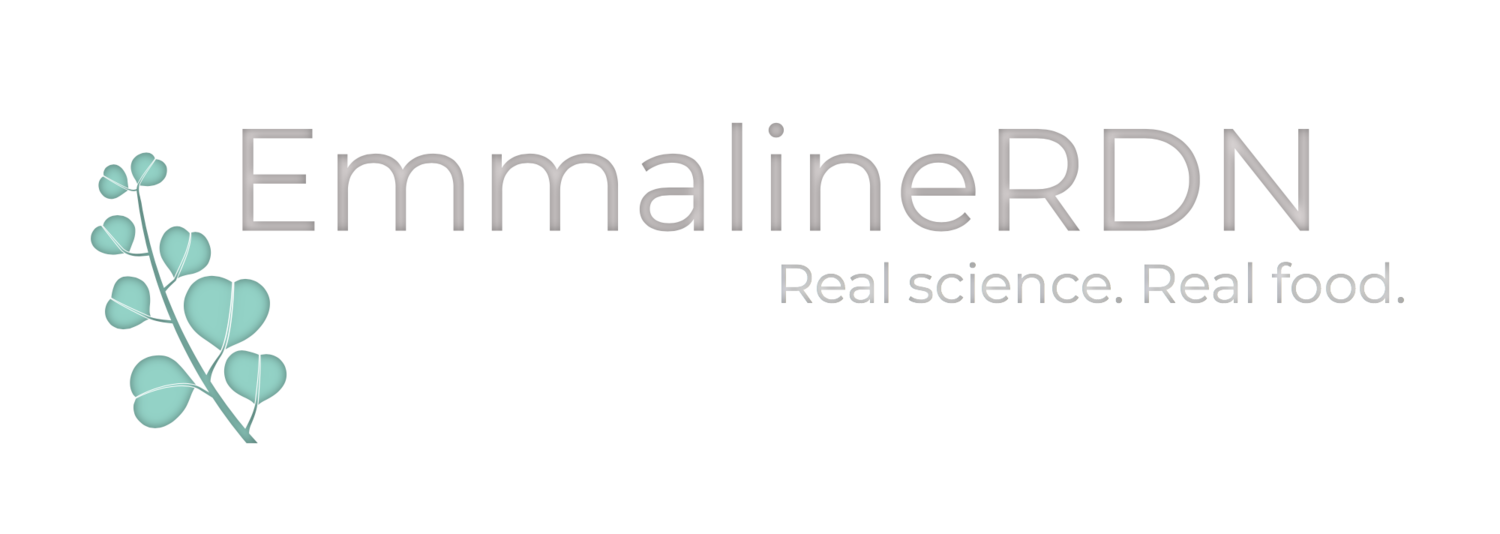Periods of self isolation often make it difficult to motivate ourselves to eat well and exercise; however, proper nutrition (along with exercise) can have a direct and profound impact on our immune system as well as our mood. Instead of rushing to the market and stocking up on shelf stable snack foods, try this holistic approach to eating well while quarantined inside. These foods all fit within a Mediterranean diet, which has been shown to promote longevity, benefit mood and anxiety disorders, assist with energy and concentration, and reduce risk of chronic diseases like cancers, diabetes, and Alzheimer’s and dementia.
Additionally, avoiding sugar and processed food can naturally assist in preventing slumps in mood or energy. Finally avoid excessive alcohol intake as alcohol wreaks havoc on the immune system, amongst its other problematic effects.
Dietitian APPROVED SHOPPING LIST
1. Stocking the pantry -
-Dried herbs and spices (especially immune boosting Rosemary, Oregano, Garlic, Ginger, Turmeric, Cayenne Pepper)
-Extra Virgin Olive Oil and vinegar
-A couple cartons of low sodium broth/stock for making homemade soups
-No salt added or low sodium canned diced tomatoes and tomato paste for soups/stews/chili
-Nuts (preferably unsalted) like walnuts, pecans and Brazil nuts
-Seeds like flaxseeds or chia seeds
-Nut or seed butters like almond butter, natural peanut butter
-Dried beans/legumes or canned (no salt added)
-Whole grains like brown rice, oats, and quinoa
-Canned soups (low sodium) that are broth based and are rich in vegetables and beans (such as lentil soup rather than creamy soups)
-Whole grain crackers (we like Mary’s Gone Crackers)
-Dried fruit
-Raw honey (ideally Manuka Honey)
-Organic Coffee
-Tea (ideally Organic, especially for Green tea)
-fruit and veggie wash or white vinegar to wash produce
2. Stocking the freezer -
-Frozen vegetables
-Frozen fruit- especially fruits like berries and pitted cherries, which are high in antioxidants and won’t keep long in the refrigerator
-Frozen individually wrapped fish filets (such as wild salmon or cod)
-Frozen poultry such as chicken breast
-Frozen low sodium meals that are rich in vegetables, whole grains, and high quality protein like chicken or beans (we like Amy’s vegetarian and vegan meals or Evol for chicken meals, along with Frontera skillet bags)
3. Stocking the refrigerator -
Do your normal grocery shopping (produce, meat, etc) with enough to last at least a week, plus just a little EXTRA of the following foods (look for foods with as far out expiration dates as possible)
-Eggs
-Grassfed milk or non-dairy milk (we like MALK and New Barn brand almond milk, MALK and Califia oatmilk)
-Yogurt (unsweetened) or non dairy yogurt (unsweetened) - we like Kite hill and Forager project
-Tempeh or tofu (we like Lightlife tempeh)
-Hummus
-Kombucha or Kefir for healthy probiotics (in addition to yogurt) and to have beverage options aside from water - we like GTs Kombucha and Forager Project Kefir
4. Produce with a longer shelf life -
-Citrus like oranges, lemons, limes, grapefruits (these can also be refrigerated to extend shelf life)
-Cabbage (should stay refrigerated)
-Carrots (whole unpeeled with tops removed to extend shelf life in fridge)
-Squash (refrigerate to extend shelf life)
-Root vegetables like sweet potatoes (keep in a cool dark cabinet)
-Onions and garlic
And finally, try to buy what you need, and avoid hoarding supplies so we can all stay well during this time!





